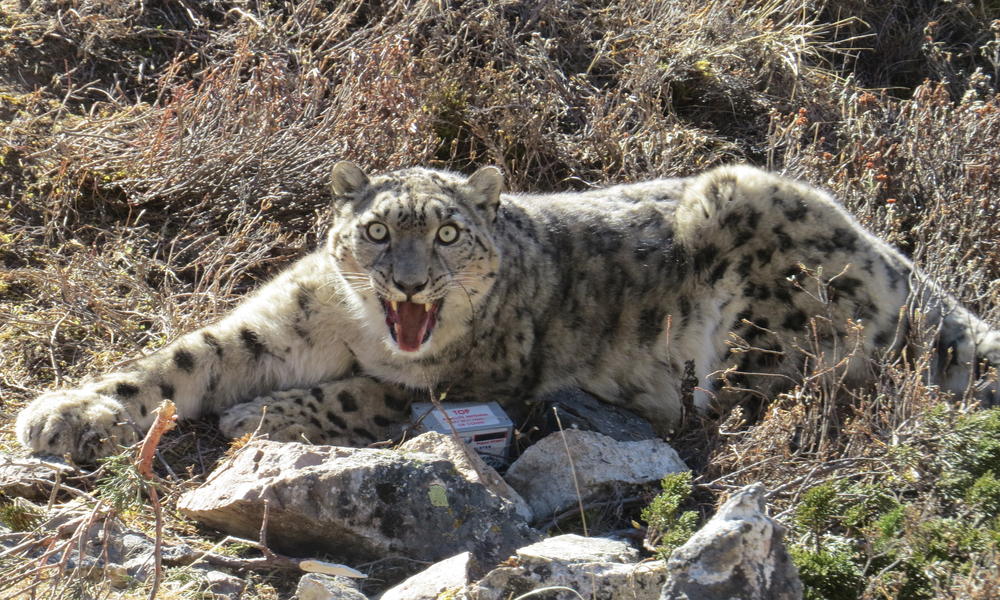“Snow leopards are not just iconic species of the Himalayas, they are vital indicators of the health of a fragile ecosystem that provides freshwater to millions of people in Asia,” said Shubash Lohani, WWF’s Deputy Director of the Eastern Himalaya Ecoregion Program.
Collaring the snow leopard helps researchers better understand these elusive, beautiful animals that roam freely through the Himalayas. Snow-leopard territory reaches through China, Nepal, and India.
There are about 18 snow leopards in Kangchenjunga Conservation Area. The snow leopard is endangered because of hunting, habitat loss, retaliatory killings, and climate change.
Let’s travel to Nepal to see how these magnificent snow leopards are tracked, tagged, and set free.
1. Tracking the Animal
Kamal Thapa/WWF Nepal
It takes several weeks to track the snow leopard in high mountains of Himalaya region. This cat was captured by a foot snare, which did not harm it.
2. Sedating the Leopard
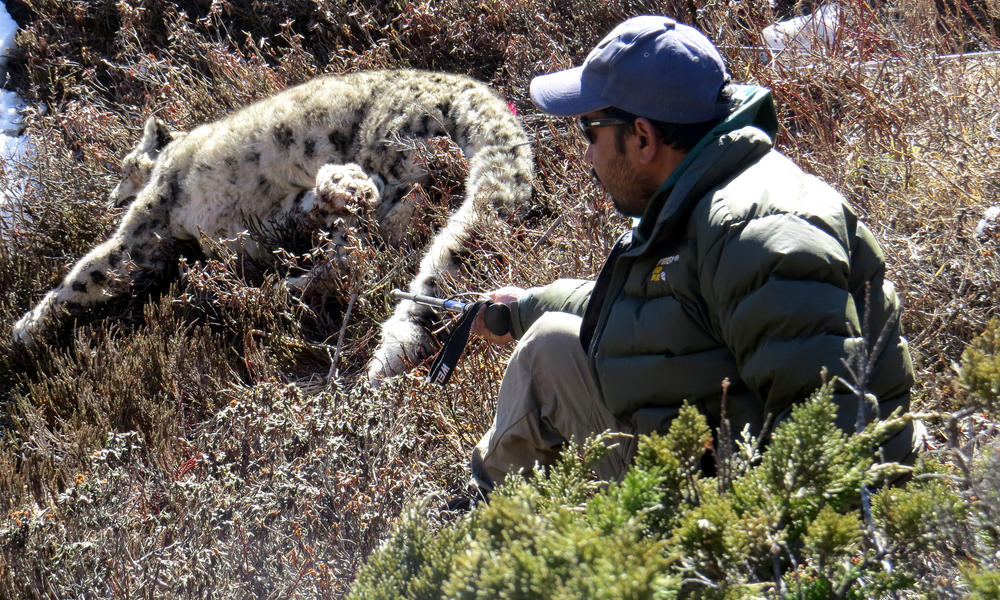
After snow leopard was tranquilized, WWF’s Dr. Rinjan Shrestha tested whether the anesthesia was working. Collaring must be done quickly.
3. Collaring the Snow Leopard
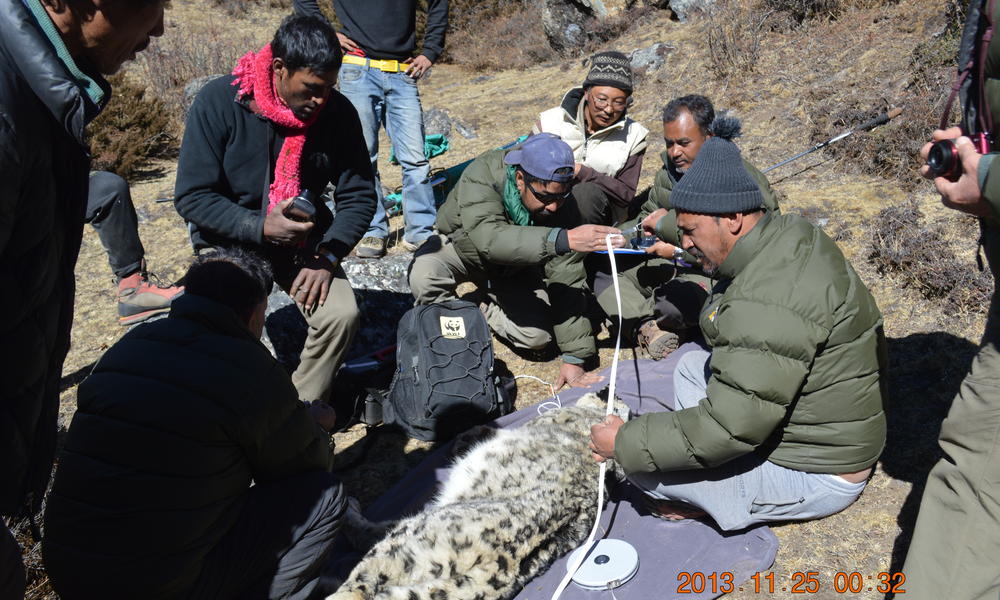
Dr. Rinjan Shrestha collared the snow leopard. This male is around 5 years old, 88 pounds, and 6 feet from head to tail.
4. Waking From the Tranquilizer
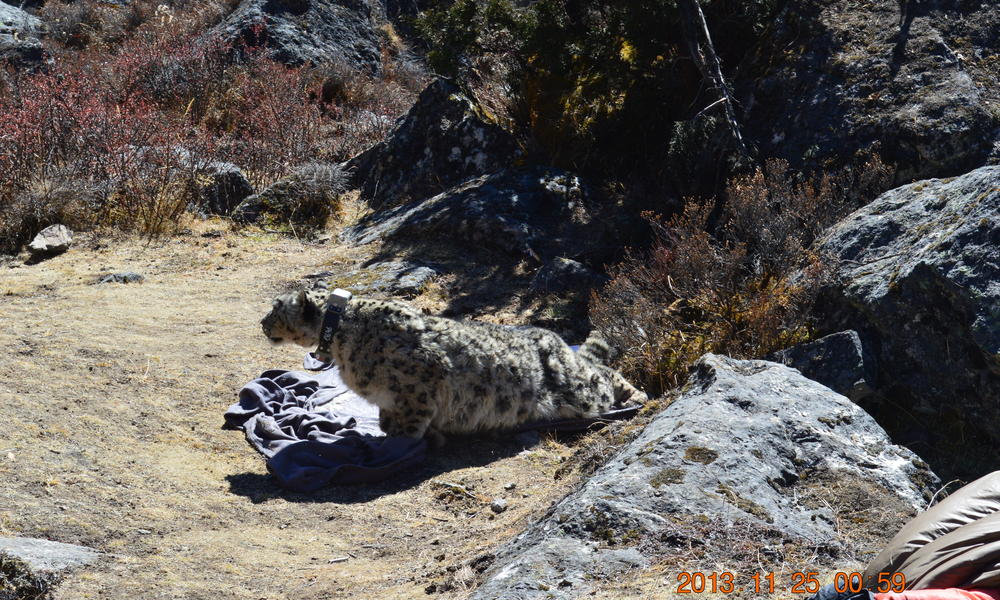
The snow leopard, now collared slowly woke up, ready to roam free. This leopard is named Ghanjenzunga after a local deity of Nepal. The collar will send off information every four hours. This team will study the animal intensively for about two years. The collar can monitor the animal’s temperature as well as activity.
5. Collared Leopard
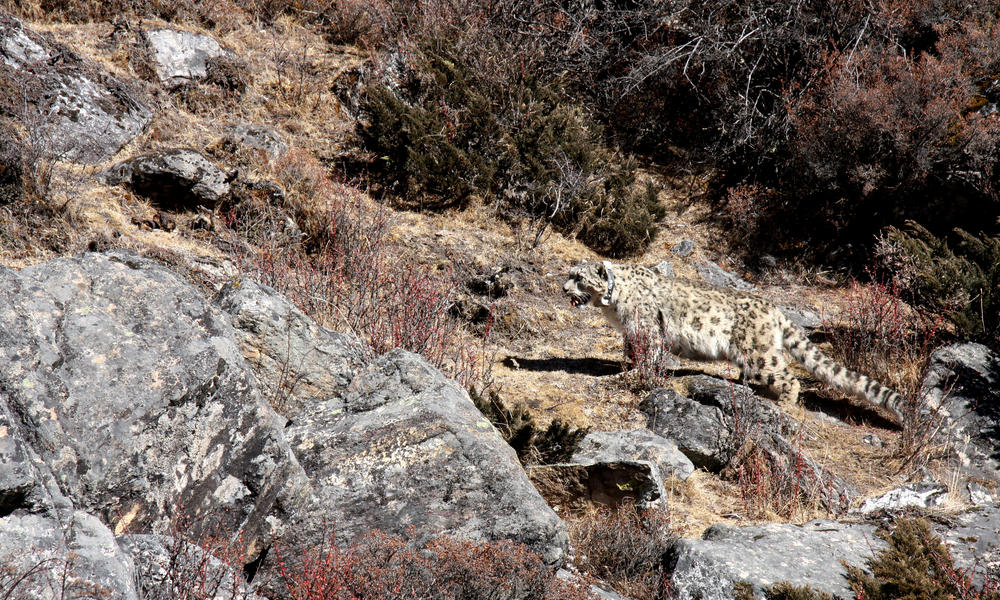
This leopard will provide very important information related to its species, for example, ecological behavior, movement patterns, territorial behavior, and habitat. It will help develop strategies further protect the leopards.
6. Collaring Team
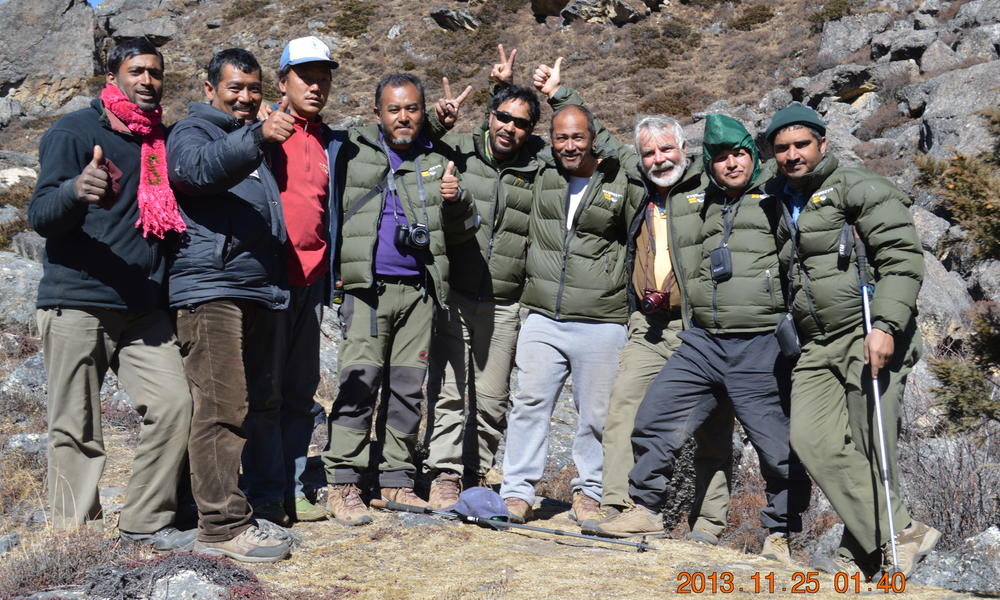
Groups involved in the government-led project include WWF, National Trust for Nature Conservation, and Kangchenjunga Conservation Area Management Council/Snow Leopard Conservation Committee-Ghunsa. This is the first time local scientists in the area are tracking the snow leopard to gather information.
For more on WWF Click Here
Images Shutterstock: Snow Leopard Waiting, Snow Leopard by Trees, Snow Leopard by Rocks, Snow Leopard Face


